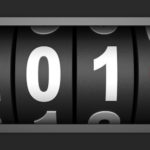Lee Anderson, fashion designer and founder of FAAR and Starkweather Labs, recently posed a question on LinkedIn which caught my attention: Does anyone care about fashion + aerospace?” I care about both individually but I couldn’t immediately see how they worked together, so I asked Anderson to tell me more.
Fashion and aerospace have always had a connection – its importance is growing as the space race heats up, Anderson explained. The collaboration is key to driving enthusiasm around aerospace to attract tomorrow’s much-needed talent and investors. Partnerships between the two industries will also be essential to competing in the emerging space economy and could even be fundamental to our future way of life.
Selling a dream
Space is in vogue (and Vogue) again. If you have hit the high street or ASOS online lately (and I have, hard), stars, rockets and planet prints are big this season, trickling down from the catwalk.
Brands are also using aerospace as a storytelling mechanism. Buzz Aldrin recently collaborated with fashion brand Sprayground to create a space-themed capsule line including a coat, backpack, cap and gloves.

Anderson says: “They’re not working on highly technical products necessarily, but the fact that they’re incorporating this narrative of space and the ‘Mission to Mars’ is really cool because it gets this whole new audience excited about what’s happening in space again.”
This, in turn, could get people excited about finding opportunities where they might not have seen them before: “Someone graduating from a fashion programme, for example, might find a job at SpaceX,” Anderson says.
She added that this buzz around space “…hasn’t really been the case in my lifetime, but it’s what was going on when Elon Musk and Jeff Bezos were children, and that’s what got them excited to the point that they’re investing billions of dollars into this new space age.”
This getting people excited is Anderson’s focus with FAAR (fashion and aerospace for advanced realities), a community she has set up alongside her Starkweather fashion brand. It is aimed at inspiring, advancing and supporting interdisciplinary collaboration “to best design interplanetary lifestyle and well-being”. While the work is exploratory right now, in the future, Anderson hopes FAAR will be involved in influencing policy and even creating a dedicated trade association.
Closing the loop
Fashion and aerospace have a technical history too. The first space suits for the Apollo mission were sewn in a bra factory, for example.
“There’s always been this expertise specific to fashion that is totally indispensable for the aerospace industry,” Anderson says. “It’s not really the sexy part of it, but it’s very fundamental to the success of the programme. That goes into material science, biology, ergonomics and more.”
These opportunities to partner look set to grow in various areas as technologies converge. Both industries, for example, are working on advancing additive manufacturing (3D printing).
“Why not use shared R&D to get there faster?” Anderson says. “That same thing applies to closed loop manufacturing, which in space would be totally game-changing.”
If we could find a way produce, duplicate and recycle clothing in space, “it would be revolutionary,” Anderson notes. “Those crossovers are really, really enticing.”
Party on Mars: What are you wearing?
Elon Musk is quoted as saying: “Everyone looks better in a tuxedo.” (I don’t but I’ll run with the principle).
Anderson lives in Chicago. In the freezing winters she found it depressing seeing everyone in the city looking the same in black puffy coats.
“Can’t we have some individuality?” she said. “Perhaps it sounds kind of petty, but at the end of the day, it is a psychological thing. By the end of the winter you’ve spent three months just wearing this same black coat every day. It’s not healthy when you think of all of the other aspects of winter that affect us.”
She developed her Starkweather brand around that concept, aiming to create beautiful outerwear garments that are as warm as those boring black coats.
In the same way, we need to think more about the psychological aspects of life in space, Anderson argues. What is life actually like in space? What is our lifestyle going to be?
“I believe that we will have people at scale, very large numbers of people, living in space. I want Starkweather to serve that market. And the discussion of fashion in this context isn’t frivolous; it’s actually an essential part of who we are, and we’ve seen that throughout human history.”
The idea has fired Anderson up creatively. “Some people love colour and prints and that probably wouldn’t be the Starkweather brand, but another brand that is serving the space community, that might be their thing. I would love to see that kind of diversity there as much as we have on Earth.”
“I also think sometimes about the casual versus formal…if we have cocktail parties, can we dress up? Do we have accessories? What does that look like?”
She noted: “If we don’t set it up so that we have that form of expression and self-identification in space, that could be problematic. We don’t know what the consequences would be of that kind of thing.”
Fashion forward
Interdisciplinary partnerships between fashion and aerospace need to be built early, Anderson says.
“The reason FAAR was created is because I realised that in order to get to that point, people would need to be comfortable with the idea of having fashion brands that operate in the market that is space. We have to learn how to communicate with each other. Aerospace engineers and the fashion industry need to start speaking the same language.”
Now is the time for aerospace companies to take action. “We are at an important moment of transition,” according to Anderson.
She warns “Companies like SpaceX focus on the aesthetic aspects. That is, I think, very forward-thinking. A Boeing that has been around much longer, but doesn’t have that same kind of sexiness to it, for example, is going to face problems when it comes to a different type of consumer that’s making choices about who they’re going to support or not.”
Her message to the industry is this: “Don’t overlook the importance of the design community to the work you are doing, especially as you make plans for the next decade or so. It’s powerful and it can help with a lot of your growth into the next phase.”
Anderson looks set to be one of the pioneers leading the charge in facilitating this collaboration and the opportunities it offers.

